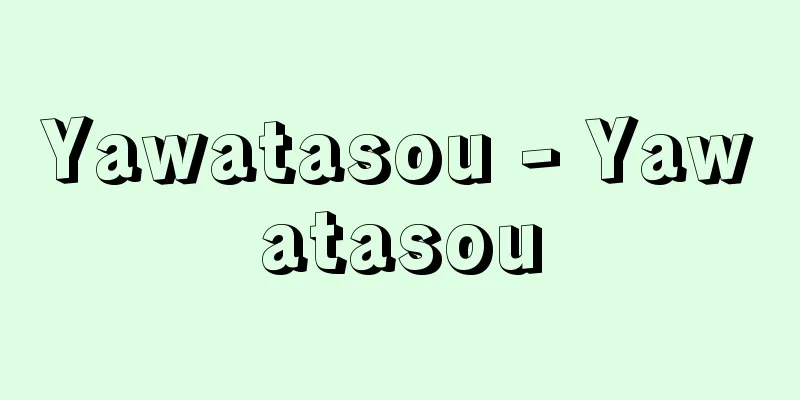Annexation of Korea - カンコクヘイゴ

|
This refers to the fact that the Treaty on the Annexation of Korea was signed on August 22, 1910 (Meiji 43) (promulgated on the 29th), and Korea became a Japanese colony in both name and reality. Since Japan concluded the first unequal treaty with Korea, the Japan-Korea Treaty of Amity (also known as the Treaty of Ganghwa Island) in 1876 (Meiji 9), Japan sparked the Sino-Japanese and Russo-Japanese Wars over the domination of Korea. On February 23, 1904 (Meiji 37), immediately after the outbreak of the Russo-Japanese War, Japan forced the Korean government to sign the Japan-Korea Protocol, expropriated military-necessary land, and on August 22 of the same year, concluded the First Japan-Korea Treaty, which allowed Japan to appoint financial and diplomatic advisors recommended by the Japanese government. After the Russo-Japanese War, Japan was recognized as having a superior position in Korea by the Treaty of Portsmouth, and further obtained the consent of the United Kingdom and the United States. With the urgent need to strip Korea of its diplomatic rights, Japan concluded the Second Japan-Korea Treaty (also known as the Protectorate Treaty) on November 17, 1905 under pressure from the Japanese military. As a result, the Government-General of Korea was established in February of the following year, and the representative of the Japanese government, the Government-General, took control of diplomatic power and made Korea a protectorate. All diplomatic institutions of Korea in foreign countries were abolished, and at the same time, foreign envoys left Seoul. Upon learning of this treaty, the Korean people launched an anti-Japanese movement, and the five ministers who signed the treaty, including Yi Wanyong, were called the "Five Traitors of the Eulsi" and became the target of the people's anger. During this period, Japan's economic invasion was further strengthened with the backing of political power. First, in order to carry out the Russo-Japanese War, it laid railways, took control of communication systems, and occupied ports. In addition, the currency reorganization project (1905) that collected the Korean currency, the leaf coins and cupronickel coins, and made Japanese currency circulate created a track for the circulation of Japanese goods and capital exports, dealing a blow to the Korean bourgeoisie. Furthermore, regulations on land and house certification were put into effect, Japanese people were granted the right to freely own land in Korea, and in 1808 the Toyo Takushoku Company was established as an agency acting on behalf of the Japanese government on national policy. As the colonization of Korea progressed, anti-Japanese struggle intensified. In 1907, Gojong, who had sent a secret envoy to the International Peace Conference in The Hague calling for Korean independence, was deprived of his throne, and on July 24 of the same year, the Third Japan-Korea Treaty was forced upon Japan, and domestic power was taken over by the Resident-General. In addition, the secret memorandum stipulated (1) the dissolution of the Korean military, (2) the delegation of judicial power, and (3) the appointment of Japanese to vice ministerial posts in each ministry. When the military was suddenly disbanded on August 1, lower-ranking soldiers and other soldiers rioted, which merged with the anti-Japanese movement of the people and developed into a nationwide righteous army movement. Japan deployed its regular military forces to thoroughly suppress this movement, while secretly preparing for annexation. When the righteous army movement had reached its peak, the final plan to make Korea a colony in both name and reality began to take shape. On March 30, 1909, the annexation plan was secretly submitted to Prime Minister Katsura Taro by Foreign Minister Komura Jutaro, and on July 6, the Cabinet formally decided on the "Decision on Korea Policy," the main point of which was to "carry out the annexation of Korea at an appropriate time," and received the Emperor's approval on the same day. All that remained was to wait for the right timing for annexation. However, when Ito Hirobumi was assassinated by An Jung-geun in October of the same year, the Japanese government skillfully took advantage of this and took another step toward annexation. In May 1910, Terauchi Masatake, who became the third Resident-General with the mission of annexation, took control of police power in Korea in June, and began negotiations with Prime Minister Yi Wanyong under strict security, and on August 22, the "Treaty on the Annexation of Korea" was signed. The Government-General of Korea was established as the governing body (the first Governor-General was Terauchi Masakiyo), and its rule lasted until August 15, 1945 (Showa 20). [Setsuko Miyata] "Government-General of Korea, 'Protection and Annexation of Korea' (1918)" ▽ "Yamabe Kentaro, 'Japan's Annexation of Korea' (1966, Taihei Publishing)" Source: Shogakukan Encyclopedia Nipponica About Encyclopedia Nipponica Information | Legend |
|
1910年(明治43)8月22日「韓国併合ニ関スル条約」が調印され(公布は29日)、朝鮮が名実ともに日本の植民地となった事実をさす。 日本は1876年(明治9)朝鮮に対して最初の不平等条約である日朝修好条規(江華島条約ともいう)を締結して以来、朝鮮支配をめぐって日清(にっしん)・日露戦争を引き起こした。日露戦争開戦直後の1904年(明治37)2月23日には、すでに朝鮮政府が局外中立を宣言していたにもかかわらず、日韓議定書を強要、軍事上必要な地点を収用し、同年8月22日、第一次日韓協約を結び、日本政府推薦の財政・外交顧問を置くことを認めさせた。日露戦争後ポーツマス条約で朝鮮における優越的立場を認められ、さらに英米の了解を取り付けた日本は、朝鮮の外交権剥奪(はくだつ)を焦眉(しょうび)の急として、05年11月17日第二次日韓協約(保護条約ともいう)を日本軍の圧力の下で締結した。これにより翌年2月韓国統監府が開設され、日本政府の代表者たる統監が外交権を掌握して、朝鮮を保護国とした。諸外国にあった朝鮮の外交機関は全部廃止され、同時に外国公使はソウルを去った。この亡国条約を知った朝鮮の民衆は反日運動を展開、条約に調印した李完用(りかんよう/イワニョン)ら5大臣は「乙巳(いっし)の五賊」とよばれ、民衆の怒りの的となった。この時期には、政治権力を背景に、日本の経済的侵略が一段と強化された。まず日露戦争遂行のための鉄道敷設、通信機関の掌握、港湾の占領などが行われた。また従来の朝鮮の通貨であった葉銭、白銅貨を回収、日本の通貨を通用させた貨幣整理事業(1905)は、日本の商品流通と資本輸出のための軌道をつくり、朝鮮のブルジョアジーに打撃を与えた。さらに土地家屋証明規則などが施行され、日本人は朝鮮内で自由に土地を所有する権利が認められ、08年には日本政府の国策代行機関として東洋拓殖株式会社が設立された。 このように朝鮮の植民地化が進むと、反日闘争はいっそう激化した。1907年ハーグの万国平和会議に朝鮮の独立を訴える密使を送った高宗は帝位を奪われ、同年7月24日、第三次日韓協約を強要され、内政の権限も統監が握った。さらにその秘密覚書で、(1)朝鮮軍隊の解散、(2)司法権の委任、(3)各部次官に日本人を任用、などが取り決められた。8月1日不意を打って軍隊の解散が強行されると、下級兵士を中心に軍人が暴動を起こし、それが民衆の反日運動と合流、全国的な義兵闘争に発展した。日本は正規の軍隊を投入してこれを徹底的に弾圧しながら、秘密裏に併合の準備を進めた。義兵闘争が山を越したころから、朝鮮を名実ともに植民地とする最後の計画が具体化した。09年3月30日、極秘裏に併合案が小村寿太郎外相から桂(かつら)太郎首相に提出され、7月6日には正式に閣議で、「適当ノ時期ニ於(おい)テ韓国ノ併合ヲ断行スル事」を骨子とする「対韓政策確定ノ件」が決定され、同日天皇の裁可を受けた。あとはただ併合のタイミングをうかがうだけとなった。ところが、同年10月安重根(あんじゅうこん/アンジュングン)によって伊藤博文(ひろぶみ)が暗殺されると、日本政府はこれを巧みに利用、併合へさらに歩を進めた。10年5月、併合の使命を帯びて第3代統監になった寺内正毅(てらうちまさたけ)は、6月、朝鮮の警察権を掌握、厳重な警戒体制の下で総理大臣李完用と交渉を開始、8月22日「韓国併合ニ関スル条約」を調印。統治機関として朝鮮総督府を設置(初代総督は寺内正毅)し、その支配は1945年(昭和20)8月15日まで及んだ。 [宮田節子] 『朝鮮総督府『朝鮮ノ保護及併合』(1918)』▽『山辺健太郎著『日本の韓国併合』(1966・太平出版社)』 出典 小学館 日本大百科全書(ニッポニカ)日本大百科全書(ニッポニカ)について 情報 | 凡例 |
Recommend
Meeting - to make
[1] (independent verb) Kuai-su (independent verb) ...
Geometric tolerance zone
...Such shape and position accuracy indicates the...
ISLisp - ISLisp
...Later, a specification called CLOS (CommonLisp...
Tanba Yosaku Matsuyo no Komuro Bushi - Tanba Yosaku Matsuyo no Komuro Bushi
Joruri, domestic drama. Three acts. Written by Chi...
Attic
A band of walls forming the top of the facade of a...
Domino
…This was a remarkable change; up until that poin...
Mustafa Koç Bey (English)
…On the other hand, Mustafa 'Ali (?-1606), Pe...
Animus
〘Noun〙 (animus) In Jungian theory, the masculine e...
Turkish bath - Torukoburo (English name) Turkish bath
A dry bath is a closed room filled with hot air, ...
Kanchuuki - Kanchuuki
Also known as "Kalenaka Kyoki." This is...
Kaomisekyougen - Kaomisekyougen
In the Edo period, the Kabuki performances held in...
Makromolekül (English spelling)
…Born in Worms, he received his doctorate from th...
Plastoglobule
… The stroma contains 60-80% water by weight of t...
Japanese Crane (Red-crowned Crane) - Japanese Crane
A bird of the crane family. Wingspan: 65cm. One of...
Perets Davidovich Markish
1895‐1952 Soviet Jewish poet, author, and playwrig...









